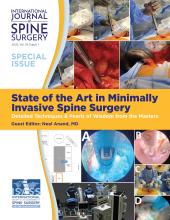ABSTRACT
Background The term whiplash describes the acceleration-deceleration mechanism of injury to the cervical spine. Whiplash injuries present with a variety of clinical and psychological manifestations, collectively termed as whiplash-associated disorders (WADs). Although largely self-limiting, some patients may experience long-lasting symptoms. This review aimed to summarize the current literature regarding the predictive value of cervical degeneration in the prognosis of patients with WAD.
Methods A comprehensive search of the literature was performed. Nine studies were identified, including 894 patients, with an age range between 16 and 76 years.
Results A statistically significant association was found between moderate facet joint degeneration and nonrecovery. Although no association was established between isolated disc degeneration and nonrecovery, total cervical degeneration (facet joint + disc degeneration) was shown to correlate with nonrecovery.
All included studies demonstrated the lack of correlation between preexisting disc degeneration and clinical outcomes. Four studies showed a significant correlation between cervical degeneration and poor prognosis following whiplash injury. A significantly higher proportion of patients who remained symptomatic at 2 years following a whiplash injury had preexisting degenerative changes.
Conclusions This review highlights the presence of significant variability in the existing literature concerning WAD in terms of study methodology, definitions of cervical degeneration, and outcome measures. Degenerative changes of the facet joint lead to alterations in its biomechanics. Several cadaveric, biomechanical, and clinical studies have demonstrated facet joints as a source of pain in patients with chronic WAD. We present moderate evidence to suggest that preexisting facet joint degeneration is a negative prognostic indicator for long-lasting symptoms in WAD. Conversely, preexisting disc degeneration is not associated with chronicity of WAD symptoms. We propose facet joint instability due to facet joint capsule rupture as a potential mechanism for nonrecovery. Further studies are needed to inform our knowledge of the long-term sequelae of WAD among patients with preexisting cervicalspine degeneration.
Footnotes
Disclosures and COI: No funding sources supported this work. No conflicts of interest are declared.
- This manuscript is generously published free of charge by ISASS, the International Society for the Advancement of Spine Surgery. Copyright © 2021 ISASS







